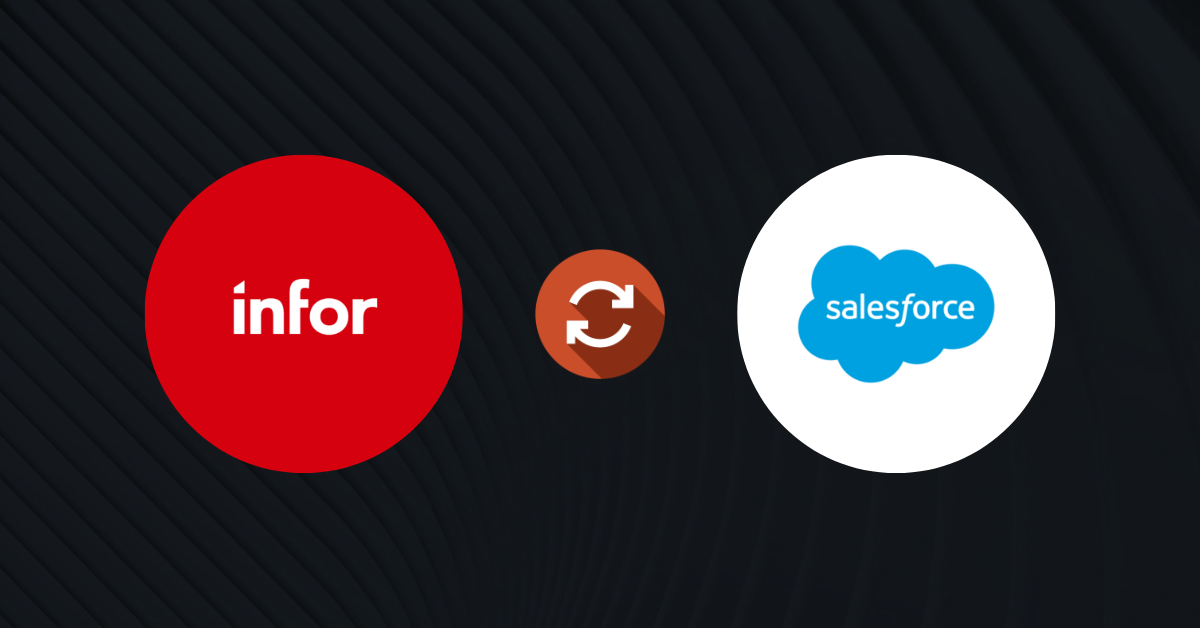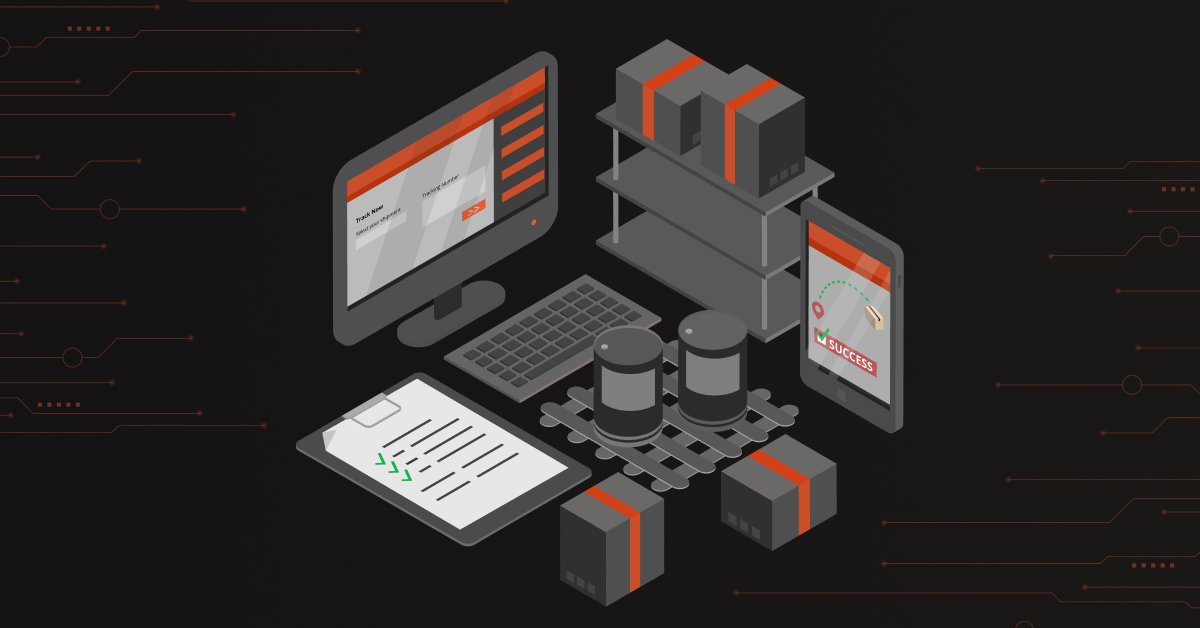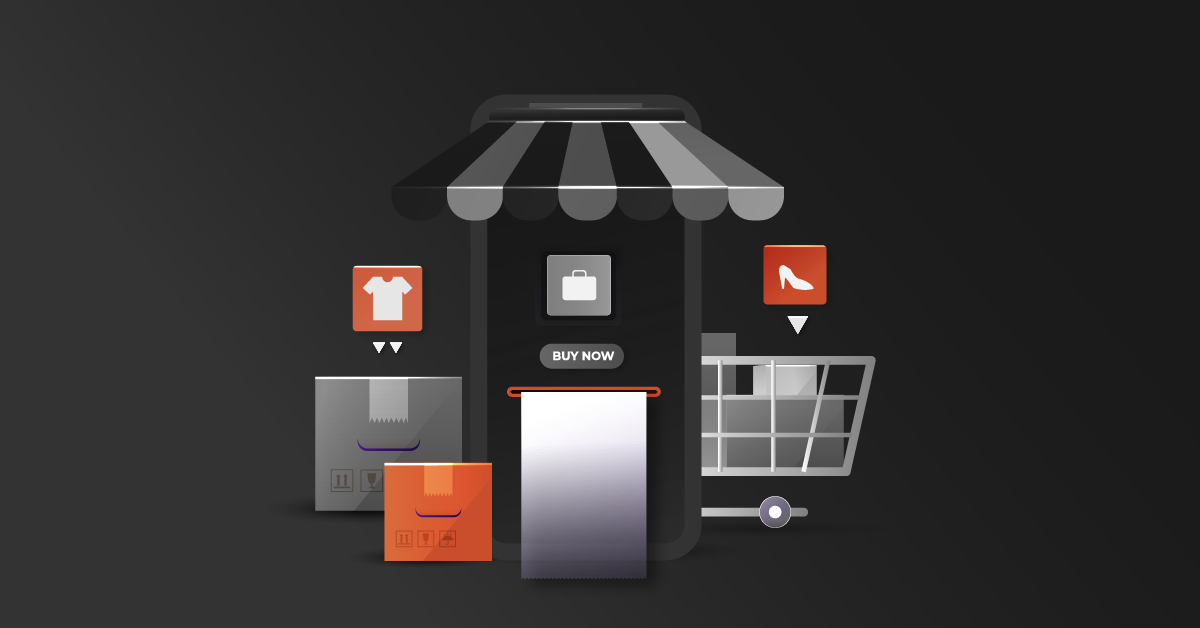Delivering better customer experiences is easier for companies with the aid of a CRM platform like that offered by Salesforce. When a business integrates its ERP with Salesforce, that’s taken one crucial step further: helping manage customer data, providing relevant information, and streamlining workflows.
Data synchronization can be daunting at the get-go, so here’s an explainer to help you understand how to integrate your Infor ERP with Salesforce and take your distribution business one step ahead.
Contents
Benefits of Salesforce Infor Integration for Distributors
Data synchronization between the platforms is made easier by integrating Salesforce CRM with Infor. The data submitted on the cloud matches and displays all the information when adding a new customer to the CRM. Some of them are invoices, finances, performance and so on. This aids with a better customer experience and is a great customer relationship management.
Therefore, with the help of Infor Integration, the manually managed process gets fully automated. So, here are some benefits of Infor Integration and Salesforce:
One Source of Truth from Different Systems
The sales team is aware that the financial planning team and Salesforce are more likely to make use of the ERP system. By integrating Infor and Salesforce, the users can process the required data throughout their skilled system. With the help of synchronized data, the staffs get all the sales data information without switching to different professional services.
Better Communication
Information outside of the teams can also be strengthened with the proper use of Infor Integration resources with Salesforce CRM. For instance, the finance team can easily obtain financial data and sales information even though the sales team manages Salesforce thanks to the integrator. This facilitates more fruitful conversations. As the information is gathered in a single CRM, this aids in efficient communication and real-time.
Improved Accuracy in Data
When the data from the integrated system gets shared on the ERP system, a lot more data can be used for assessing and briefing the system. This helps in gaining in-depth and accurate knowledge about customer satisfaction.
With the integration of Salesforce with Infor, users can review more accurate and quality data. The higher level of management helps to get an overall view of the ongoing operations of the company and customer information at a single click.
Time-Saving
When companies follow a copy-and-paste format, standard data entry might lead to errors. The organization generally hinges on various systems where the employees need to insert data in each of the systems. This can be time-consuming as well as might create errors and duplicity.
As a result, with the help of a well-implemented ERP Integration with Salesforce, the data automatically gets inspected and stabilized to get data all over. To achieve effective productivity and storage, it is crucial to remove duplicate data. With the help of professionals and software vendors, the questions and issues of the staff are answered with ease.
Automated Workflows
There is zero demand for coding while integrating the Salesforce ERP platform. With the help of a simple point-and-click approach, workflows can be produced and anyone can manage the business logic to generate processes, transfer data, and automate data administration.
As Infor CRM can automate multiple tasks single-handedly, integrating Infor M with Salesforce can increase the productivity and automation of tasks simultaneously. This helps employees to focus on their expertise rather than on tedious tasks.
Improved Customer Satisfaction
The user is provided with a thorough understanding of the customer’s range by integrating Infor Integrator with Salesforce. Additionally, it displays purchasing patterns, order history, and payment transactions. Better client relationship management and business growth are both facilitated by this.
With the integration of Infor Integrator with Salesforce, moving the data becomes fast and customer support also becomes seamless. The information is available in one single system which increases the efficiency of the processes.
How to Integrate Infor with Salesforce
Salesforce is a CRM system that includes various factors like e-commerce, marketing automation, sales, service, and data management. The distributors need to select a third-party system like SAP, Infor, Microsoft, etc., for managing the supply chain, financials and accounting, manufacturing, and product. Thus, Salesforce needs to rely on ERP Integrator for better functioning.
If a distributor already has CRM incorporated, then integrating an ERP system becomes easy as well as less time-consuming. For successful integration, it is important to set up the process with expertise.
Integrating Salesforce with ERP is not complicated. DCKAP Integrator not only helps in streamlining the workflow, but it also includes leading names such as Hubspot, Netsuite, Oracle, BigCommerce, Shopify, Epicor Prophet 21, and more.
With the help of DCKAP Integrator, distributors can increase their productivity, save money and time, and simplify their tech-related queries. If you have any further questions, go for a free demo.
What is Custom Integration for Salesforce?
Custom Integration is an approach that helps a business to integrate its systems, software, websites, or platforms. This helps in meeting the unique specifications and needs of the business. Some generic integration processes are mapped out and available. For big brands like Microsoft, the integration allows businesses to combine their software for better individual needs. It helps to improve the overall efficiency of the company. With the help of optimization and automation of various business processes, the time taken gets shortened.
How does Custom Integration In Salesforce Work?
Salesforce integration can be categorized into two types:
App-based Salesforce Integration
App-based Salesforce integration is done by using dedicated applications which allow the integration of data between two applications. It also helps in building a unified platform within a few simple clicks. For this, a smooth and robust integration platform is required that helps in the similar transfer of data between two applications.
Code-based Salesforce Integration
When the sales force integration is performed through a programming language it is known to be a code-based salesforce integration. It uses Apex which is similar to Java and has certain key benefits.
- Easy-to-understand and simple-to-use language
- Suitable for various API versions
- Built-in support
- Apex can be controlled and hosted by the Lightning platform
Setting up Custom Integration in Salesforce
- Create a free developer account
A salesforce developer account helps to give you a working salesforce for specific needs and also provides an interface experience and various user reviews.
- Setup a 360-degree view of the customers
After setting up the developer account, companies must establish a 360-degree view of their customers. This can showcase a lot of functions and factors that are difficult to handle. They are responsible for managing the authentication and routing requests of the relevant customers.
- Basic Salesforce 0auth data flow
With the help of a 360-degree view, companies get hands-on experience and an idea of how the ERP data flows. After successful authorization, the salesforce sends a refresh token and access token. The access token has an expiry date and is passed in the header of the API requests. The refresh token is used to claim a valid access token. The expiry setting can be changed in this and only when revoked, it can be set to never to expire mode.
What are the Challenges with Custom Integration?
Disparate Data Sources and Formats
In every business, the data is collected through various applications like lead generation tools, accounting and billing software, CRM, email marketing apps, customer applications, etc. These tools are accessed and maintained by different teams. These teams have their process for updating and inputting Infor ERP data and also showcasing some example videos to the customers for better understanding.
Financial Data isn’t in the right place
Not having easy access to financial data can waste a lot of time and ratings of the system. This results in a loss of time and efficient work performance. This issue arises due to data silos which are a group of data that can be accessed through one department and is isolated from the rest.
If there is no information about where who, and how to enter the data, it might lead to the end of information silos. It might also lead to a lack of data transparency. At times, data entered by the marketing team might be already entered by customer support and the other might not know anything about the same.
Low quality or Outdated Data
When a company has no company-wide standards and most of the operations are done manually, it ends up with outdated, inaccurate, or duplicate data. Duplicate might be one big problem if the departments have to input the same data. At times the data might not even get updated due to the long frequency of organizing data. Thus, it gets difficult to trust the data which leads to wrong analysis.
Use of the wrong integration method for business needs
It is easy to fall into the trap of incompatible methods while using integration solutions. It might happen that the business is using the right software but the wrong approach. Thus, seek solutions that best match your existing systems, teams and their capabilities, and budgets.
A lot of databases
When a business collects data indiscriminately, it ends up with a lot of information which might lead to burying the valuable information. While you collect data from various channels without any proper DBMS, this problem can get amplified. With the daily amount of data, it gets challenging to manage, extract value, and analyze it.
What are the Capabilities of third-party tools for Salesforce Infor Integration?
Infor Integration performs additional capabilities to the business, offering a seamless experience to the end-users. Here is a list of certain practices for third-party applications:
Determining business requirements
Salesforce is an enormous CRM solution which is equipped with plenty of capabilities and features. Businesses hence, need to implement these features for efficient performance. Anticipating the business needs before starting the integration becomes necessary. It helps in understanding the flaws and pain points of the business and provides an integrated approach to overcoming them.
Keeping all teams updated
When integrating a third-party tool with Salesforce can lead to a dilemma. This is because of the responsibility of managing Salesforce as well as third-party apps. Keeping the team in the loop from the start is good advice. Hence, the team members are updated with the information and feedback helps in making necessary enhancements.
Extensive product details
After finalizing the salesforce product, it is important to analyze it from the scratch. Analyzing the terms and conditions of the product is critical as it attracts legal issues leading to unwanted obstacles for the business. The product selected must comply with the business policies and must suit the needs of the business.
Challenges faced by Third Party Applications with Salesforce
Installing the application and coding
For successful integration of salesforce, it is important to install and perform extensive coding. So, these additional coding and installations help the business to update the software and avail the benefits. But with frequent updates, the system might face certain failures. Thus, businesses should keep a check on the system and follow change management policy for preventing any issues.
Excessive use of APIs
During the development of an integration application, REST API and SOAP API are considered easy to use. Right correct codes help in the efficient working of the system. As APIs manage a large number of record sets, businesses ought to follow certain practices to keep it going efficiently. Due to the inefficiency of codes, the system might have excessive API calls leading to salesforce limit issues and the performance of the business.
Obsolete Data
One big challenge in Salesforce integration is to notify the old and obsolete data. If not done then it might delay the smooth and efficient integration process. For preventing this, businesses must execute rigorous cleanup and delete unwanted data. This prevents duplicity of data and affects data integrity.
Lack of proper Data Management Strategy
Before the initialization process of the Salesforce integration project, it is important to fix data quality. Mapping data fields for custom fields, rejecting or mapping duplicate records, and resolving various conflicts which are important to cater to might lead to a massive failure. To prevent these issues it is important to devise a precise data management strategy help businesses to manage the data management stuff.
Final Thoughts
Infor has offered many businesses a means of managing their business processes better. When integrated with Salesforce CRM it offers users a 360-degree view of their customers for driving increased revenue. This also helps in providing customer satisfaction and various marketing campaigns.
To bring your business one step closer to simplified commerce and boosted profitability, confirm your customized demo today.




